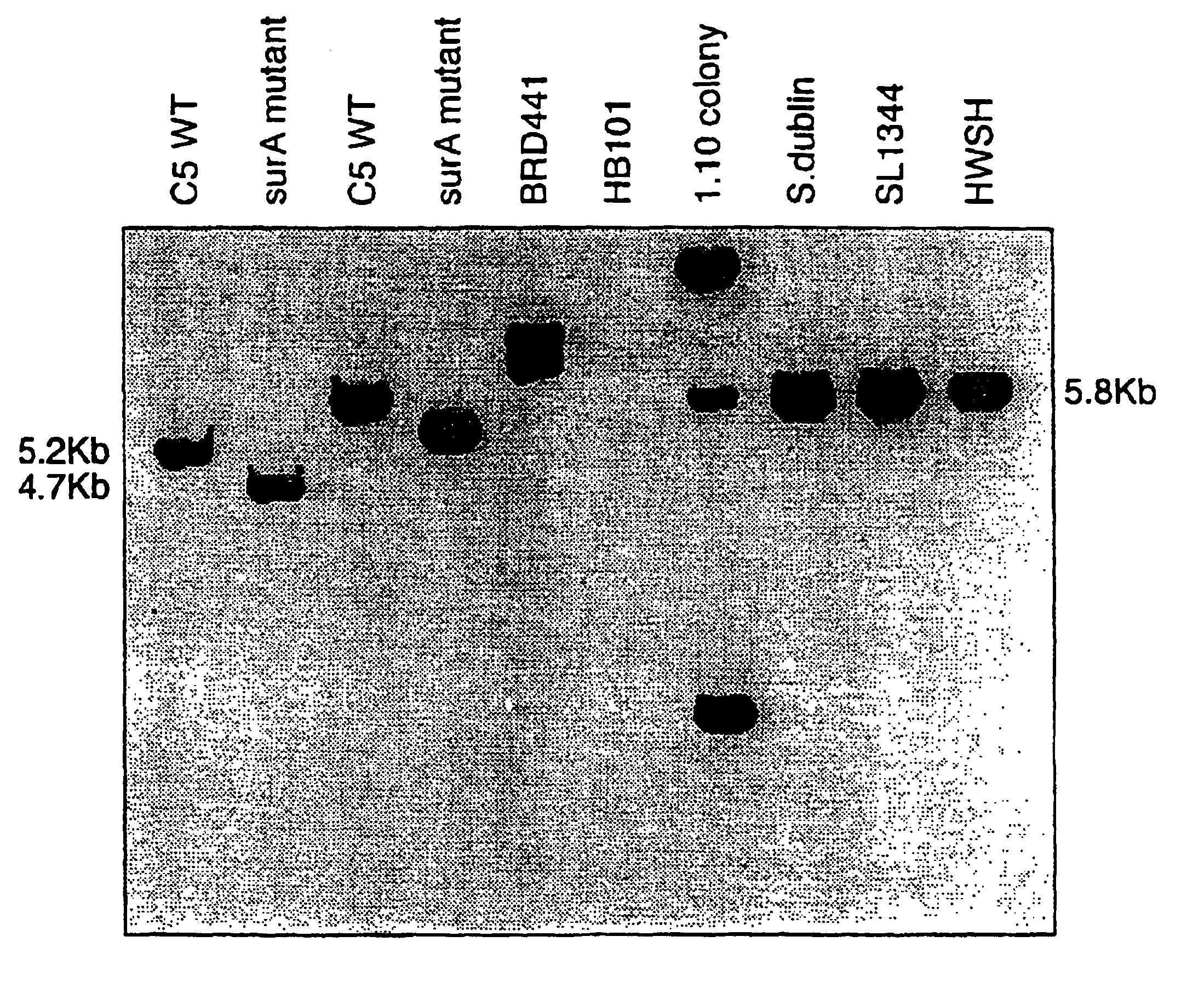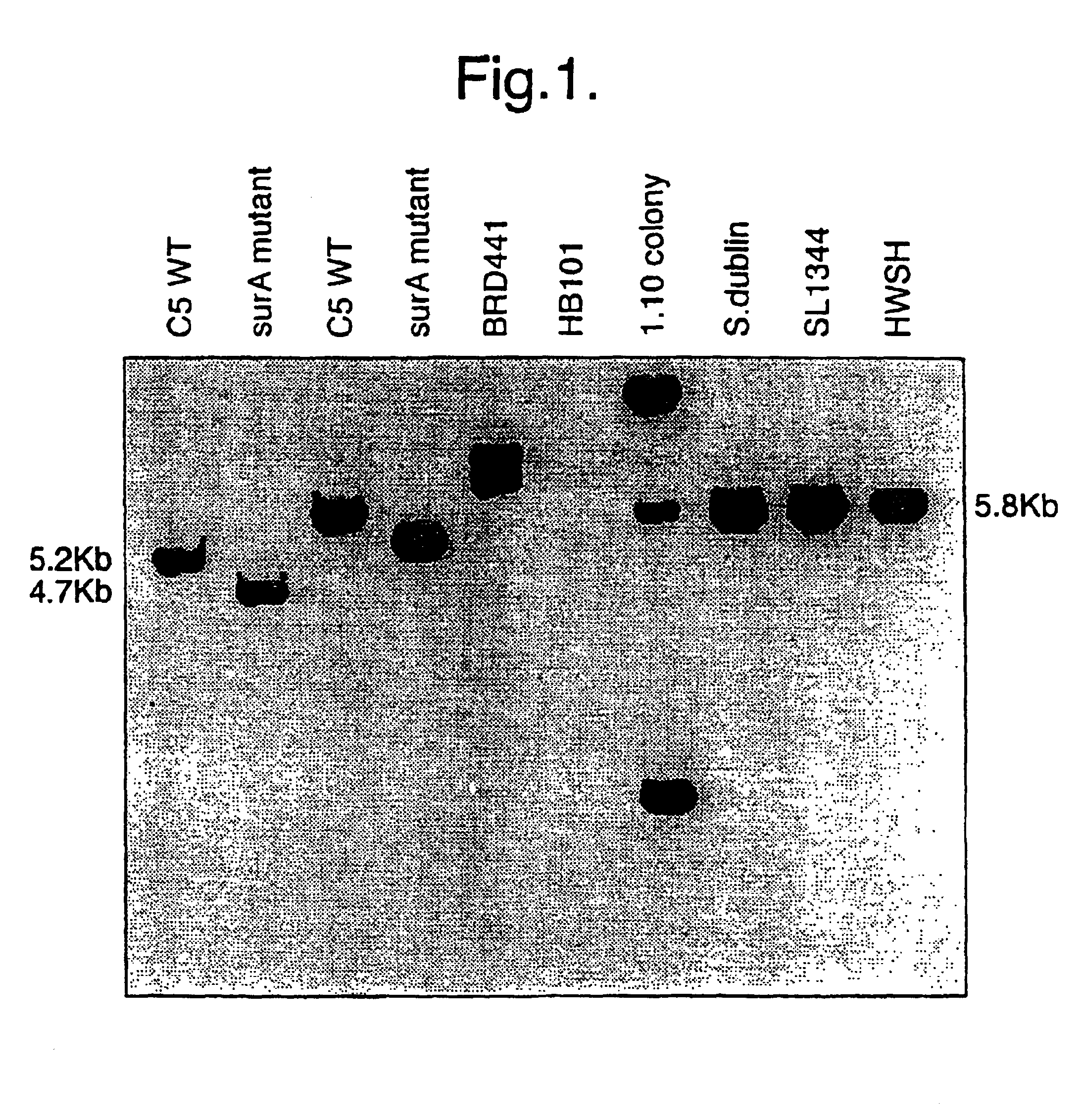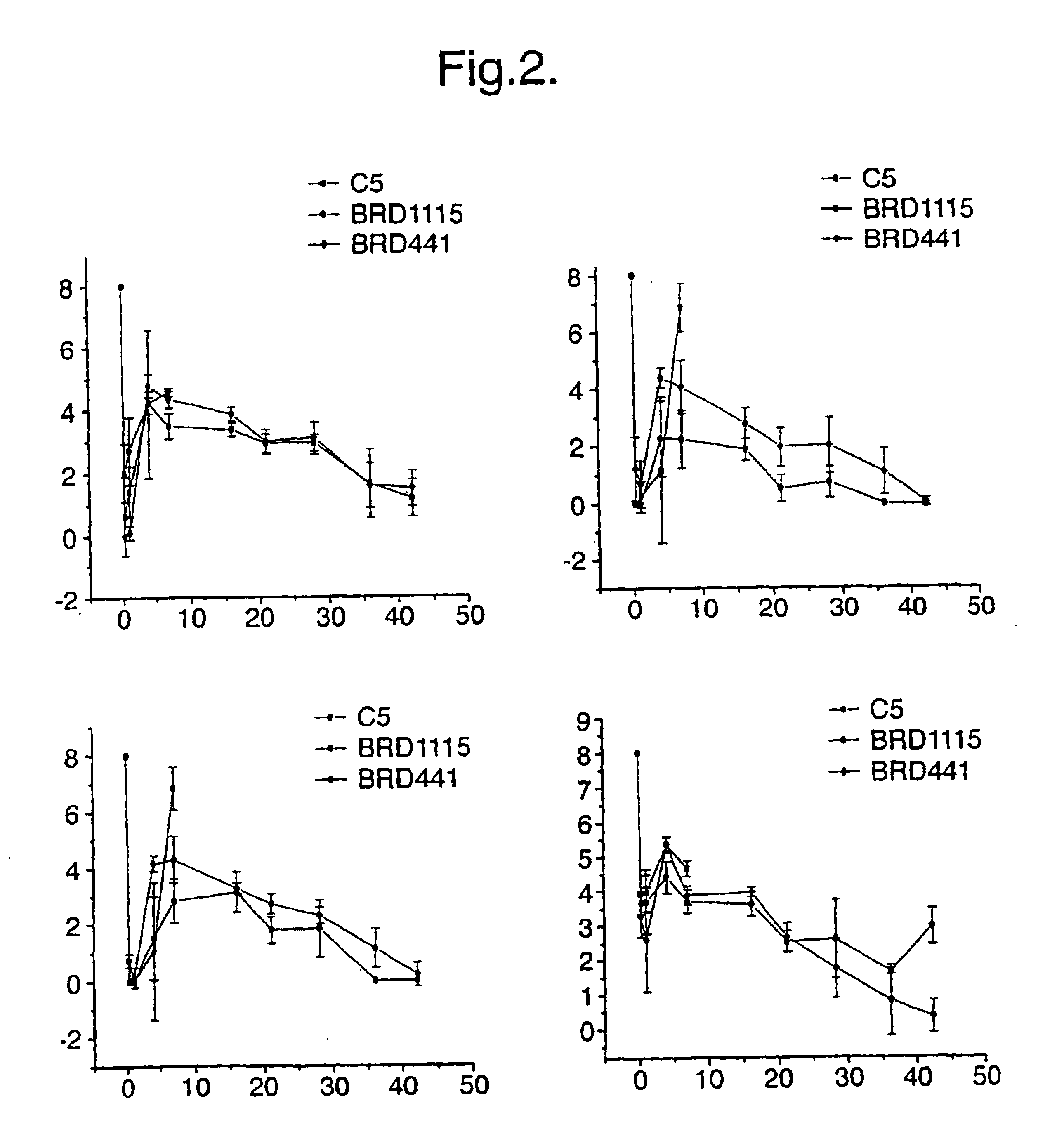Vaccines containing attenuated bacteria
a technology of attenuated bacteria and vaccines, which is applied in the field of attenuated bacteria vaccines, can solve the problems of unclear mode of attenuation, strains are particularly difficult to characterize in terms of possible reversion, and attenuated strains, and achieve the effect of promoting the folding of extracytoplasmic proteins
- Summary
- Abstract
- Description
- Claims
- Application Information
AI Technical Summary
Benefits of technology
Problems solved by technology
Method used
Image
Examples
example 1
[0037]This Example shows the identification of mutations in surA as attenuating mutations, the construction of a defined surA mutation and the evaluation of a surA mutant as a vaccine (both against homologous challenge and as a carrier for heterologous antigens).
Materials and Methods
1.1 Bacteria, Bacteriophage, Plasmids and Growth Conditions
[0038]The bacteria used in this study are listed in Table 1. Bacteria were routinely cultured on L-agar or in L-broth containing 100 μg / ml ampicillin or 50 μg / ml kanamycin where appropriate. The bacteriophage P22HT105 / 1int is a high frequency transducing bacteriophage obtained from Dr Tim Foster (Trinity College, Dublin). The plasmid pGEM-T (Promega Corporation, USA) is designed for direct cloning of PCR fragments and pBluescript°II SK+(Stratagene Ltd, Cambridge, U.K) is a general cloning vector. The other plasmids are described in the text
1.2 Purification of DNA and DNA Manipulation Techniques
[0039]All DNA manipulation including Southern blottin...
example 2
[0079]This Example confirms that the mutation in surA is responsible for the attenuation. This was determined by complementation of the deleted gene with an intact version of the gene expressed on a plasmid. The complemented strain was as virulent as the wild-type organism given orally to mice.
Materials and Methods
3.1 Construction of Plasmid Containing the Intact SurA Gene
[0080]pLG339 (41) is a low copy number plasmid based on pSC105. A 3kb fragment of the plasmid pGEM-T / 212 / 213 (section 2.2) containing the intact surA gene and flanking region was cloned into the SphI / SalI sites of the plasmid pLG339 to create the plasmid pLG339 / surA. A schematic of this plasmid is shown in FIG. 4.
3.2 Introduction of the Plasmid pLG339 / surA into Defined Mutant Strain BRD1115
[0081]The plasmid was electroporated into electrocompetent BRD 1115 as previously described in section 1.5.2. Transformants containing the plasmid were selected by plating the electroporation mix onto agar plates containing 15 μg...
PUM
| Property | Measurement | Unit |
|---|---|---|
| volume | aaaaa | aaaaa |
| volumes | aaaaa | aaaaa |
| volumes | aaaaa | aaaaa |
Abstract
Description
Claims
Application Information
 Login to View More
Login to View More - R&D
- Intellectual Property
- Life Sciences
- Materials
- Tech Scout
- Unparalleled Data Quality
- Higher Quality Content
- 60% Fewer Hallucinations
Browse by: Latest US Patents, China's latest patents, Technical Efficacy Thesaurus, Application Domain, Technology Topic, Popular Technical Reports.
© 2025 PatSnap. All rights reserved.Legal|Privacy policy|Modern Slavery Act Transparency Statement|Sitemap|About US| Contact US: help@patsnap.com



